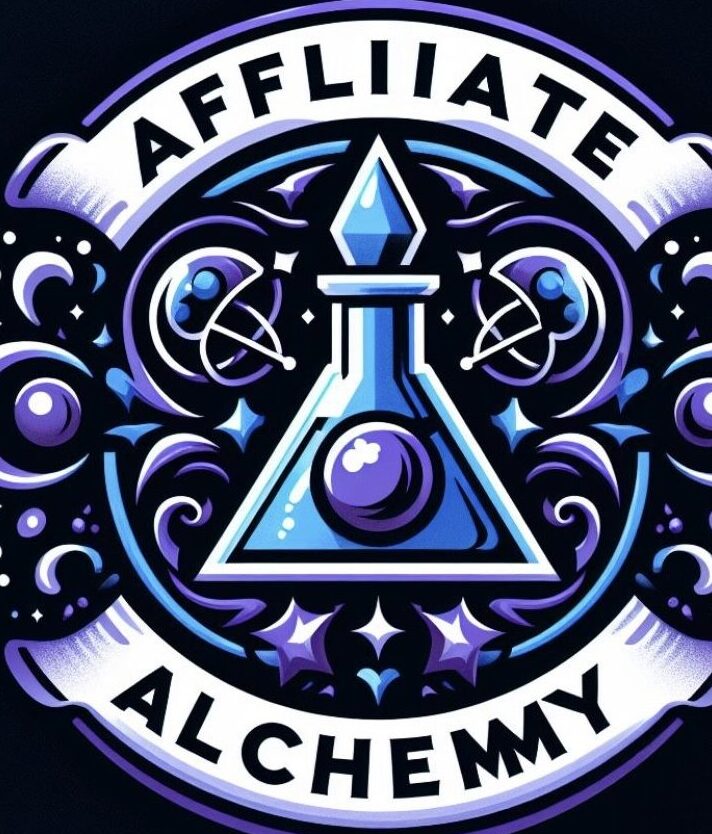In my opinion, affiliate marketing is an exciting arena. It’s a place where creativity meets commerce, and content is king. Now, as we step into a digital age where this marketing form thrives, understanding how to craft content that not only sells but also serves is more vital than ever.
Don’t worry too much about the complexities of affiliate marketing. At its core, it’s about connecting a target audience with products or services they find valuable, with the help of content that guides them toward an informed purchase. Hence, a strong content strategy is essential for standing out in a crowded online space.
But here’s the thing: this isn’t just about driving clicks or sales; it’s about building trust and credibility. That’s where the principles of people-first content and E-E-A-T come into play. Your content needs to exemplify Experience, Expertness, Authoritativeness, and Trustworthiness. It’s about writing with the reader’s benefit in mind, ensuring that what you create is not only informative but also meets high standards of quality and reliability.
My goal here is to walk you through some powerful strategies for affiliate marketing content creation. These strategies will serve as a map, charting a course through the landscape of audience needs, SEO alignment, and the quest for engagement. By the end of this guide, you’re going to find out about establishing a trustworthy voice, optimizing your content for both users and search engines, and ultimately driving better affiliate results.
And if you want to build a foundation for effective affiliate marketing, pay close attention. We’re about to shift our focus to understanding your audience, because that’s the linchpin of any successful content strategy. Let’s move on.
Understanding Your Audience: The Foundation of Content Creation
If you want to craft content that really resonates with your audience, you’ve got to start with a solid understanding of who they are. This isn’t just about crunching numbers and demographics; it’s about getting into the weeds of what makes your audience tick. What are their pain points? What keeps them up at night? That’s where your content can step in to provide relief and solutions.
Creating buyer personas is a bit like drawing blueprints before building a house. It guides your content strategy, ensuring that everything you put out there is tailored to fit the needs of your readers. This personal touch is what can set you apart in the bustling world of affiliate marketing. With these personas in hand, you’re going to find out about creating content that speaks directly to your audience’s hearts and minds.
Engagement isn’t a one-way street. To really nail this, you’ve got to interact with your audience. Use your platform to ask them questions, encourage discussion, and listen to what they have to say. Their feedback can provide invaluable insights that will shape your content strategy. Combine this with social listening tools, and you’ll have a front-row seat to understanding your audience’s current trends, preferences, and even their language.
In my experience, the more you know about your audience, the better you can serve them. Don’t worry too much about gathering tons of data right out of the gate. Start by getting to know your audience gradually through interactions and research, and your content will naturally become more effective and impactful.
Crafting High-Quality, Expert Content
I’m going to let you in on a little secret: being seen as an expert can skyrocket your affiliate marketing efforts. But how can you truly establish expertise in your niche? It all starts with a sincere commitment to know your stuff inside out. Dive into research, attend seminars related to your niche, and don’t just skim the surface. Your content should reflect a clear understanding of the topics you’re discussing.
Now what? Well, roll up your sleeves because it’s time to plow through articles, studies, and expert interviews. This isn’t just about slamming facts onto a webpage; it’s about weaving these elements into a story that resonates with your audience. Producing authoritative content that stands out means taking the time to create pieces that offer in-depth insights, not fleeting glances.
Another cornerstone? Evergreen content. That’s the material that stays fresh as thyme – I mean, time. These articles, videos, or infographics are not bound by the ticking clock of fleeting trends. Instead, they provide value that spans seasons and years, ensuring you remain a reliable resource in your industry.
Just as important is upholding the integrity of your information. Prioritize accuracy and originality to build trust with your audience. If they spot inaccuracies or plagiarized content, it won’t just tarnish your name; it could erode the very trust you’ve worked hard to establish.
If you want to weave SEO into all of this expert content crafting – and trust me, you do – fear not. SEO, when done right, isn’t a sellout; it’s smart strategy. We’re not looking to trick algorithms here; instead, we’re aiming to maximize reach so your well-researched, expert content lands in front of the eyes hungry for it. And that’s precisely where Section 4 takes us: into the realm where SEO and people-first value hold hands and skip into the sunset. Sounds picturesque, doesn’t it? But it’s entirely achievable, and I’m going to show you how in the next section.
Integrating SEO Without Sacrificing People-First Value
In the pursuit of high rankings, it’s crucial not to lose sight of what’s most important to people. You’re going to find out about blending SEO tactics with a people-first approach to content creation. Remember, the goal is to attract not just any traffic, but the right traffic that’s going to find value in what you have to offer.
Keyword research should go beyond mere volume; it needs to home in on user intent. That means choosing keywords that reflect what your audience is really looking for. Once you’ve done that, it’s about weaving those terms into your content in a way that feels natural, helpful, and engaging.
SEO doesn’t mean stuffing your content with keywords to the point of incomprehensibility. It means crafting content that’s easy to read, informative, and enjoyable, while also being discoverable. It’s about hitting those sweet spots where user experience and optimization coexist.
Then there’s the technical side of SEO \’ think mobile-friendliness, fast loading times, and clean, navigable site architecture. These factors are critical for keeping visitors on your site once they’ve clicked through, ensuring they have a positive experience that’s likely to keep them coming back for more.
Now, let’s move on to another crucial aspect of content creation. Creating immersive, appealing content often goes beyond just words on a page. I’m talking about the power of multimedia to captivate and educate \’ and that’s what we’ll delve into in the next section.
Utilizing Multimedia to Enhance Engagement
You’re going to find out about the value of blending visuals, videos, and infographics into your affiliate marketing content. This isn’t just about making things look attractive; it’s about communicating your message more effectively and engaging your audience on a deeper level.
Creating multimedia content isn’t a walk in the park; it requires knowledge and a strategy that puts trust and credibility at the forefront. That’s where the principles of E-E-A-T come in. It’s important to ensure that any multimedia used supports your status as an expert and is accessible, useful, and accurate.
When it comes to optimizing multimedia content, remember to include descriptive titles and alt text, compress files for quicker loading times, and ensure it is mobile-friendly. These SEO practices not only help your search engine rankings but primarily enhance the user’s experience.
Different people resonate with different types of content. Some prefer reading in-depth articles, while others might be drawn to a compelling infographic or a tutorial video. By including a variety of formats, you cater to diverse learning styles and preferences, keeping a wider audience engaged.
In the upcoming section, you’ll see how measuring the success of these strategies is crucial. By tracking performance and using analytics, you can get a clear picture of how multimedia contributes to your goals. You can always adjust your approach down the road, but you’ll be off to a strong start if you’re mindful of how you integrate and optimize multimedia content from the outset.
Measuring Success and Optimizing Strategy
Now that we’ve explored various ways to create engaging, E-E-A-T compliant affiliate marketing content, it’s crucial to understand that your first attempt doesn’t need to be your last. Here’s where measuring success and refining your strategy play a pivotal role.
I’m going to break down the critical metrics that can give you insight into the performance of your content. Look at metrics such as click-through rates, conversion rates, bounce rates, and time on page to gauge how well users are receiving your content and whether it’s effectively leading to affiliate sales.
Using analytics tools can help you make sense of the data you collect. Don’t worry too much about the numbers at the outset. Instead, focus on trends over time to get a true picture of what works and what doesn’t.
A/B testing is your best friend for optimization. By testing different versions of your content, you can see what resonates with your audience and refine your approach accordingly. Try tweaks to your headlines, call-to-actions, or even the structure of your content to find the best fit.
Lastly, remember that the digital marketing landscape is always changing. Be prepared to adjust your strategy as new trends emerge and as you learn more about what your audience prefers. The only constant in affiliate marketing is change, so embrace it as an opportunity for continuous improvement and keep the quality bar high.

As a content creator on LinkedIn, I found your guide on affiliate marketing content creation extremely insightful. Your focus on E-E-A-T principles—Experience, Expertise, Authoritativeness, and Trustworthiness—is crucial in today’s digital landscape. Understanding your audience deeply and crafting content that resonates personally is key to building trust and engagement, something I’ve learned through my LinkedIn posts.
I’m curious about your take on balancing SEO tactics with maintaining high-quality, people-first content. How do you ensure that your content remains genuine and valuable while also being optimized for search engines? Additionally, could you share some examples of multimedia formats that have been particularly effective in enhancing engagement and conversion rates? Your insights would be invaluable for refining my affiliate marketing strategies on LinkedIn. Thank you for this comprehensive guide!